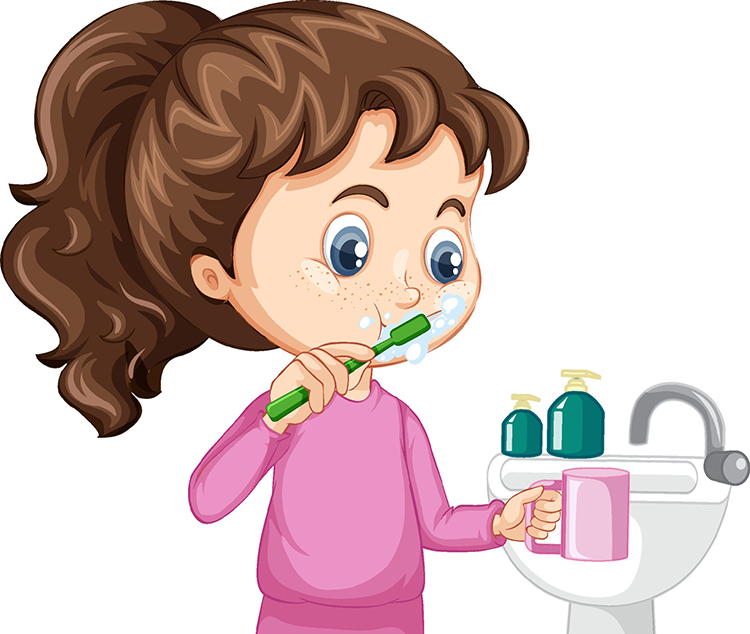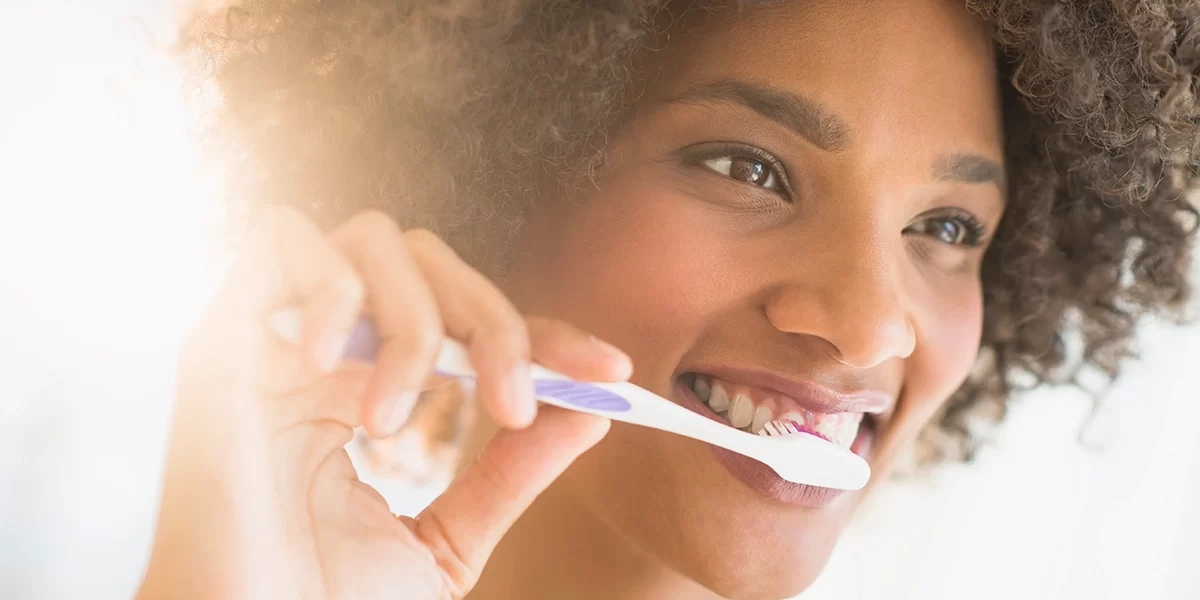A 3 step guide to brushing your teeth properly
To keep your teeth strong and healthy, we’ll discuss proper brushing and flossing techniques, evaluate tooth cleaning solutions, and explain other considerations in this piece.
The right way to brush, floss, and rinse your teeth
Step 1: Completely floss.
Even though you might not always enjoy it, flossing your teeth can assist to ensure that your teeth and gums are kept in the best possible condition. Plaque and dirt can be removed by flossing from places that a toothbrush can’t reach.
Generally, you just need to floss once per day, but if you do it softly, you can floss twice each day. If flossing hurts, you might be flossing too forcefully.
One or two inches of floss should remain in the center after you have wrapped an 18-inch piece of floss around each of your middle fingers.
Thumbs and index fingers are used to tightly grasp each end of the central part.
Work the floss carefully in between your teeth, pulling it around the sides of each tooth as you go. Before moving on to the next location, move it up and down several times on each tooth, making careful to get underneath the gum.
For each tooth, use a new section of floss.
Dental floss types
When it comes to floss, you have a few options. Nylon and single-filament floss are the two most common varieties. Both will do the job, but while single-filament floss is stronger and easier to get in between teeth, it is slightly more expensive.
There are alternatives to regular floss that can be used to clean in between your teeth. But when used correctly, regular string floss is the most productive.
Alternatives to flossing include:
Dental picks: Disposable dental picks frequently resemble toothpicks and have a short piece of floss attached to one end. They may be simpler to maneuver in your mouth than traditional floss because to their design.
Interdental brushes – These brushes are made of bristles that are wrapped around a piece of wire or plastic. They can be used to brush in between your teeth, and they’re especially helpful if you’re wearing an orthodontic appliance in your mouth that prevents you from flossing, such a permanent retainer.
Water flossers: As the name suggests, a water flosser uses a thin stream of water to clean the crevices in between teeth.
Step 2: Use a toothbrush that a dentist has prescribed to brush your teeth.
You’ve probably heard the standard recommendation to clean your teeth twice a day. Along with using fluoride toothpaste, the ADA also makes official recommendations on this. Naturally, you can brush more frequently, such just after meals. However, healthy brushing involves more than just brushing at least twice a day.

How long does tooth brushing take?
It is advised that you clean your teeth twice daily for around two minutes each time.
How do you brush your teeth properly?
Pressure is one of the most crucial aspects of proper tooth-brushing technique. Plaque can actually be removed from teeth with little force. However, brushing too vigorously might hurt your gums and wear down the protective enamel. Try brushing your teeth while simply using your thumb and index finger to grasp the toothbrush to get a sense of how hard you should be cleaning.
Your toothbrush’s movements are also important. Brushing your teeth’s front and back surfaces at a 45-degree angle to your gumline while utilizing short, vertical strokes is kindest to your gums and enamel. Circular, tiny motions are also beneficial. Do not brush from side to side; instead, brush evenly.
What sort of bristles ought to be on your toothbrush?
Using toothbrushes with soft bristles is advised by the ADA. Additionally, they advise swapping up your toothbrush every three months, whenever the bristles start to deteriorate, and following an illness.
Choosing between manual and electric toothbrushes
Both conventional and electric toothbrushes can effectively clean your teeth. Many electric toothbrushes have gentle bristles, move in circles, and control how firmly you press. With an electric toothbrush, you don’t need to worry as much about technique, but you still need to brush thoroughly and remember to keep it charged. You can choose to make a trade-off based on your tastes or the advice of your dentist.
3. Rinse, but not immediately.
Many of us are accustomed to immediately rinsing our mouths after brushing. Even with mouthwash, it’s actually advisable to delay rinsing your mouth straight soon. This is because rinsing your mouth can remove the layer of fluoride that develops on your teeth when you brush, which is why the ADA recommends using a fluoride toothpaste.
After brushing, you should wait 10 to 20 minutes before rinsing your mouth to get the full benefits of fluoride’s preventive properties. But any excess toothpaste is still acceptable to spit out.
Additionally, it’s ideal to use mouthwash after brushing and waiting, or even better, at a separate time entirely. using mouthwash before eating.







